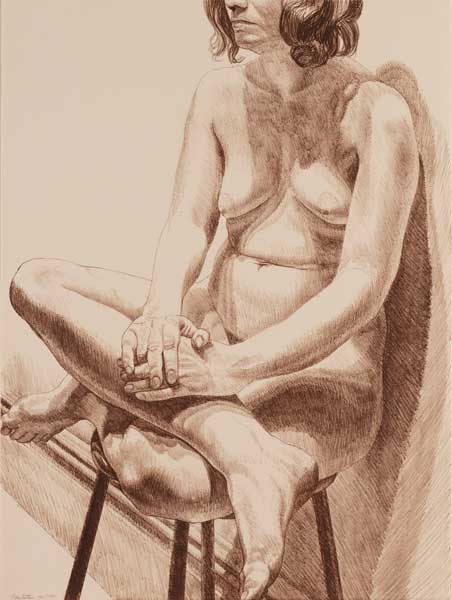Changing Poses: The Artist’s Model
Posing for an artist is an intimate and privileged experience. To submit to the sustained, analytic gaze of another is a strange thing, at once uncomfortable and pleasurable. I have only done it twice and I’m not sure I’d do it again. Back in the 1970s, I sat several times for painter Diane Fitch, then […]

Coffee By Design | Portland, Maine
Photo Credit : Katherine KeenanPosing for an artist is an intimate and privileged experience. To submit to the sustained, analytic gaze of another is a strange thing, at once uncomfortable and pleasurable. I have only done it twice and I’m not sure I’d do it again.
Back in the 1970s, I sat several times for painter Diane Fitch, then a student at Portland School of Art, now a professor at Wright State University in Indiana. The head-and-shoulders oil portrait she made of me sitting in front of a window reading now hangs in my office, both the painting and my younger self still looking as fresh as new. What I remember most about the experience was the deep sense of relaxation as I read and dozed and Diane worked resolutely to capture my likeness.
I was thinking about that meditative calm of attention when, this summer, I was asked to sit for a drawing group that meets regularly at the studio of artist Larry Hayden. Larry is a thorough-going abstract artist, yet he keeps his hand and eye in tune by drawing from the figure, in this case mine. Holding the same pose for three hours, even in 20-minute sessions with five-minute breaks, proved anything but pleasurable. My mind raced, my focus wandered, my limbs fell asleep. It was like slow torture, a feat of endurance.
I think of all this because the Rhode Island School of Design Museum of Art is about to open Changing Poses: The Artist’s Model (November 12 to June 5, 2011), an exhibition of more than 50 works from its collection that document the timeless yet ever-changing relation between and among artist, model, and the resultant work of art.
The exhibition press release notes that “Certain period-specific themes and trends come through in the exhibition: the focus on the male nude within early art schools, the interest in costume in the 19th century as a signifier of cultural or class identity, the prevalence of the eroticized female body in modern art, and the recent dialogue between the worlds of high art and fashion advertising.”
The artists represented range from Rembrandt to Picasso, John Singer Sargent to Andy Warhol. Drawing and painting from live models, life studies, is an enduring convention of art, yet I am always struck by how odd and unnatural it is, an arranged experience. Come sit still while I look at you and try to capture your likeness on paper or canvas. A portrait is one thing, an image intended to serve the sitter. But artists’ models are almost always anonymous, especially when it comes to nudes. But then does it matter who the model was for the Venus de Milo or the Mona Lisa? Our interest is in the art object and the artist who made it, not the person portrayed.
Philip Pearlstein’s 1971 nude drawing Model on a Stool is a perfect example of this indifference to identity. The model sits there passively with the top of her head cut off, her self subordinated to artist’s. For it is his skill on display as much as her flesh.
[Rhode Island School of Design Museum of Art, 224 Benefit St., Providence RI, 401-454-6500.]







